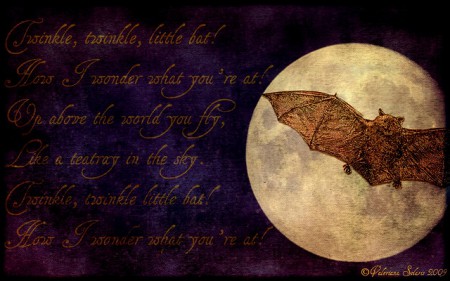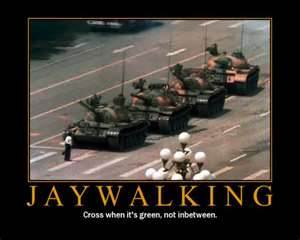Rhyme and Reason
Rhyme and Reason
At Omoan`s Collage of Head Chuck Occasions, Rustidiq, I taught a course module to English teacher trainees, Children`s Literature. It was very popular largely because of its strangenesses: a favorite poem was ‘Humpty Dumpty' (1803):
`Humpty Dumpty sat on a wall,
Humpty Dumpty had a great fall,
All the King`s horses and all the King`s men,
Couldn`t put Humpty together again.`1

Of course, he was only an egg, so why bother? I used it in the form of a history lesson to contextualize vocabulary, for example, Hump, whjich was a nickname of both the English king, Richard III (1483), and Henry VIII’s (1509) wife, Anne Boleyn. It`s not immediately obvious that the character is an egg. Originally, it was a riddle. However, no one puzzles over it for long now, because it always appears with illustrations. It`s actually about humpbacked Richard III who fell off his horse at Bosworth Field and didn`t recover his throne from the Parliamentarian Roundeads during the English Civil War (1641-45). Anne was just a hump, so Henry beheaded her to get another, while ‘Led Zeppelin from her head’ was a heavy metal warlord’s allusion to Satanism’s intention of replacing the woman’s brain, through the male only semen of the ‘serpent’s seed`, and a ‘hail of lead’ from uzi 9mm sub-machine guns mounted on giant ‘Nazi’ airships, with that of an ancient dinosaur. From the point of view of language learning, ‘Humpty Dumpty’ isn’t about the serpent’s egg, but syllabic sounds and word play. Rhyming is fun; especially for the young. Finding words that sound the same, and putting them together in simple rhymes that have a short narrative, is one of the best ways of increasing vocabulary and word building skills. A further favorite is 'Baa Baa Black Sheep’ (c.1744):
`Baa Baa Black Sheep,
Have you any wool,
Yes sir, yes sir,
Three bags full,
One for the master,
And one for the dame,
And one for the little boy,
That lives down the lane.`2

Again it`s a simple combination of words with easy syntactical formulations, which is encouraging for the beginner; but this time it`s a moral lesson which goes down quite well. The little boy living down the lane is the illegitimate child of the master of the house. Always known as the `black sheep` of the family; because of his provenance. Later, the term was used to mean any child that was wayward; because this was thought of as a sign that he or she couldn`t possibly belong to the well bred. Being a `black sheep` often meant the disowning of a rebellious child by its parents. Consequently, the phrase `black sheep` refers to anyone who lives outside of society`s norms. All of which is useful information for teacher trainees; it bolsters their sense of knowing the importance of what they are communicating to their charges at an impressionable age of 3-7 years. Later these tots may discover, like their teachers, the richer seam of history and social commentary; but for now the rhyme is enough to get and keep their attention amidst some preliminary forays into constructing a few rhyming patterns that almost accidentally become real sentences where most learners find such constructions a chore and a bore. The ‘black sheep’ of a family actually corresponded to the concept of a ship’s master of a ‘black ship’. American ships sailing into Japan’s Edo (Tokyo) harbor on July 8, 1853, were called ‘black’, because they threatened war; if the Japanese didn’t lift a trade embargo with the west. The concept can also be applied to the colonization of the planets among the stars by starships, where a ‘black sheep’ of a family indicates the master of a ‘black’ starship, whose role isn’t sociable. However, ‘Twinkle, Twinkle, Little Star' (1761), suggests otherwise for the ephemeral children of the paedophiles, who’re the slavers of the human host womb denying them the medical science of rejuvenation to ensure they remain children and slaves:
`Twinkle, Twinkle, Little Star,
How I Wonder What You Are,
Up Above The World So High,
Like A Diamond In The Sky.`3

Presented to teacher trainees, along with this parody spoken by the Mad Hatter in Alice In Wonderland (1865) by ‘symbolic logician’, Charles Dodgson, under the pseudonym of Lewis Carroll, the Oxford University mathematician, and theorizer about gravity and black holes affording instantaneous travel between the planets amongst the stars of the cosmos, the teachers are encouraged to get children to speculate about vampires, or clobbering baseball bats; if the blood sucking leeches aboard their ‘black’ starships notice that the kids of Earth haven’t been turned into soulless damned zombies working flat out for a cuppa in their treadmills:
`Twinkle, Twinkle, Little Bat,
How I Wonder What You`re At,
Up Above The World So High,
Like A Tea Tray In The Sky.`4

‘Twinkle, Twinkle, Little [Vampire/Baseball] Bat’ is what’s termed `nonsense verse`; after one of it`s original exponents Edward Lear (1812-88). It`s useful for the language classroom because it’s enabling for a teacher who knows lines of poetry, for example, those of ‘Twinkle, Twinkle, Little Star’, aren’t sacrosanct, which is helpful in providing a foundation for children to experiment with language. Moreover, the child isn’t required to make all that much sense, which is liberating. The essence of the activity is to make word patterns and structures that can be examined and commented upon insightfully. To find meaning, even where none is intended, is a useful activity that a teacher can indulge a student with. The authorial fallacy doesn`t only apply to the famous poet; it can also be applied to the inept learner. Strengthening a young soul`s self-belief can inspire greatness. Here`s ‘The Owl And The Pussycat' by Lear from 1871:
`The Owl And The Pussycat Went To Sea,
In A Beautiful Pea Green Boat,
They Took Some Honey,
And Plenty of Money,
Wrapped Up In A Five Pound Note
The Owl looked up to the stars above,
And sang to a small guitar,
O lovely Pussy! O Pussy, my love,
What a beautiful Pussy you are, you are, you are,
What a beautiful Pussy you are.
Pussy said to the Owl `You elegant fowl,
How charmingly sweet you sing.
O let us be married, too long we have tarried;
But what shall we do for a ring?`
They sailed away, for a year and a day,
To the land where the Bong-tree grows,
And there in a wood a Piggy-wig stood
With a ring at the end of his nose, his nose, his nose,
With a ring at the end of his nose.
`Dear Pig, are you willing to sell for one shilling your ring?`
Said the Piggy, `I will.`
So they took it away, and were married next day
By the Turkey who lives on the hill.`5

Of course, there’s no such thing as a ‘Bong-tree’. However, the poem is notable for adding `runcible` to the English language, that is, a spoon that has tines like a fork, which is encouraging for both teachers and learners insofar as it indicates language isn’t so inflexible as to make the construction of new lexis impossible or outré. That words can be invented ex nihilo is a revelation encouraging generations of musicians, for example, although the meaning of the phrase `rock `n` roll` has an established relationship with sexual intercourse, it actually refers to the movement of a ‘rocking horse’, because it was that type of vehicle that the Greeks used before the gates of the city of Troy in Asia Minor (Turkey) to gain entry. After the Trojans took the huge hollow wooden rocking horse inside, the Greeks emerged to capture the city for homosexuality in pederasty for war and spread their contagion further. Celebrating the penisless woman, ‘rock ‘n’ roll’ corresponds to the ‘Trojan horse’ virus, that is, the bullet in the brain of the race to the planets among the stars, which won’t get there if it doesn’t reproduce.

In ancient Greece homosexuality for war was institutionalized, while by the late 20th century, the discovery of the ‘incurable killer disease’, HIV/AIDS, by DR Congo in 1983, which was spread by homosexuals mixing blood, shit and semen in each others’ anuses, established homosexuality as a contagious disease. When the modern 21st century successors to the Greeks, the ‘geeks’, began devising ‘bad machine code’ to infect computer systems and cause the machine brains to die in the same way that AIDS killed human brains, the disease had become a plague consistent with the idea that humans were the playthings of plague gamers, whose alien will was ring-slaving humanity to death for its entertainment in wars.

‘Peter Piper' by Run DMC’s Darryl McDaniels, Joseph Simmons and Jason Mizell, from their 1986 CD, Raising Hell, takes nursery rhyme characters, rhymes and rhythms, to tell a story about the `hood`. Run DMC portray themselves as characters in an urban folklore made up of familiar childhood figures with an admixture of knowingness and streetwise flair, and that`s what excites students of language. Taking well known verses, with a magic they already possess from our days in kindergarten, and adding some more magic of our own to keep the magic in our lives alive. This is the essence of what real teachers do: inspire. Clearly, Run DMC owe a debt to someone with a chalkboard and a smidgen of enthusiasm:
`Now Peter Piper picked peppers,
but Run rocked rhymes,
Humpty Dumpty fell down; that's his hard time.
Jack B. Nimble, what nimble and he was quick,
But Jam Master cut faster; Jack's on Jay's dick.
Now Little Bo Peep, cold lost her sheep,
And Rip van Winkle fell the hell asleep,
And Alice chillin` somewhere in Wonderland,
Jack's servin` Jill a bucket in his hand,
And Jam Master Jay's making out our sound,
The turntables might wobble but
they don't fall down.`
Now Dr. Seuss and Mother Goose both did their thing,
But Jam Master's getting` loose and D.M.C.'s the king,
Cause he's adult entertainer,
Child educator,
Jam Master Jay king of the crossfader,
He's the better of the best best,
believe he's the baddest,
Perfect timin` when I'm climbin`,
I'm a rhymin` apparatus,
Lot of guts,
When he cuts,
Girls move their butts.
His name is Jay; hear the play: he must be nuts,
And on the mix real quick; and I'd like to say,
He's not Flash but he's fast and his name is Jay.
Jay's like King Midas, as I was told,
Everything that he touched turned to gold.
He's the greatest of the greater; get it straight,
He's great,
Playing fame cause his name is known in every state;
His name is Jay,
To see him play,
Will make you say,
`God damn! that DJ made my day.`
Like the butcher, the baker,
The candlestick maker,
He's a maker a breaker,
And a title taker.
Like the little old lady who lived in a shoe,
If cuts were kids, he would be you,
Not lyin y'all, he's the best I know,
And, if I lie, my nose will grow,
Like a little wooden boy named Pinocchio,
And you all know how the story go.
Tricks are for kids; he plays much gigs,
He's a big bad wolf and you're the three pigs.
He's a big bad wolf in your neighborhood,
Not bad meaning bad but bad meaning good.
We're Run-D.M.C. Got a beef to settle,
D's not Hansel, he's not Gretel.
Jay's a winner,
Not a beginner,
His pockets get fat, others get thinner.
Jump on Jay like cows jump moons,
People chase Jay like dish and spoon,
And like all fairy tales end,
You'll see Jay again my friend.`6

The drivers of cars can’t help but look at each other, which is reassuring for men, who’ve all but killed the human race of ‘woman’s seed`, although the tank guns are the long noses of their lyin’ Pinocchio nature when it comes to reassuring the women they’re invading that they’re there to defend them. The never-ending sagas of Michael Finnegan, which students can continue adding to for as long as they have breath or ideas, is a metaphor for the slavers who kill their adult offspring, that is, the Wise Old Man, so they can have children to play games of war, because adults wouldn’t want their beards blown away:
`There Was An Old Man Called Michael Finnegan,
He Grew Whiskers On His Chin Again,
The Wind Came Out And Blew Them In Again,
Poor Old Michael Finnegan,
Begin Again!`7

As children play with words it becomes an enthusiasm and an entertainment. In a language not their own, successful poetry encourages growth and self-development. Limericks, an anapestic (aabba) poetic form, are traditionally believed to have originated in the Irish county of Limerick among the 18th century Maigue poets:
`There was a young woman from Luton,
Who found she was missing a button,
She said `It`s not here,
But shed not a tear,
The buttons she had kept her suit on.`

For discipline there’s the Japanese haiku, a thirteen syllable poetic form designed to arouse students’ interest in painting an image with a few words. It`s good for the future to be able to stimulate the imaginations and creativity of youngsters. The haiku is used traditionally for painting a mind’s eye scene. Japanese haiga artists, that is, painters/photographers, have produced excellent work from haiku by expert poets:
The frog steps from the lily`s pad
Splash! Sunlight rippling.

Haiku and haiga are familiar to European poetry. There’s a poem, ‘Wedding Morn’, by D.H. Lawrence (1885-1930), an exponent of the Imagiste school (1914-17), which influenced thought and art at the beginning of the 20th century. Its sunrise image was part of the flowering of psychology`s understanding of the workings of human consciousness. The image of the ego emerging from the waters of the unconscious self each day, regenerated and renewed, is a symbol found in every aspect of mythological representations of the heroic individual (cf. Ra, the sun god of ancient Egypt). It`s an archetype, a content of the unconscious self that, activated by what the developmental Swiss psychologist Carl Gustav Jung (1875-1961) called `creative imagination`, provides the libidic energy after sleep that each of us needs in order to develop and grow in the course of our lives. The poem by Lawrence is a beneficial tool to use with those who are involved in any learning process. It`s a catalyst; what the Jungians call a facultas praeformandi: the God given latent capacity to evolve by means of archetypes that exist dormant in the psyche awaiting the impulse that will cause them to flourish, fill out, and ultimately result in the self-actualization that we are all geared towards realizing. This simple verse is, therefore, an example of such an archetype; the rising sun a symbol of the rising consciousness that the educator seeks to inculcate in the young mind:
`The morning breaks like a pomegranate,
In a shining crack of red.`8

The tradition of humanity works with children everywhere. Building the future by way of the past, or upon what’s eternal in human nature. The desire to make sounds that are pleasing to our ears; the impulse to build with words; become wordsmiths; tap the primal urge in each of us; laugh; puzzle, and wrap ourselves in the robes of earlier days to strengthen our sense of belonging: as Run DMC do in ‘Peter Piper’.
1 Arnold, Samuel `Humpty Dumpty`, Roud Folk Song Index 13026, 1803.
2 `Baa Baa Black Sheep`, Roud Folk Song Index 4439, 1744.
3 `Twinkle Twinkle Little Star`, Roud Folk Song Index 7666, 1761.
4 Carroll, Lewis Alice In Wonderland, Macmillan, 1865.
5 Lear, Edward `The Owl And The Pussycat` in Nonsense Songs, Stories, Botany, and Alphabets, 1871.
6 McDaniels, Darryl, and Joseph Simmons `Peter Piper` Run DMC, Raising Hell, Profile, 1986.
7 `Michael Finnegan` in The Hackney Scout Song Book, Stacy & Son Ltd, 1921.
8 Lawrence, D. H. `Wedding Morn` in Love Poems And Others, 1913, l.1-2.

